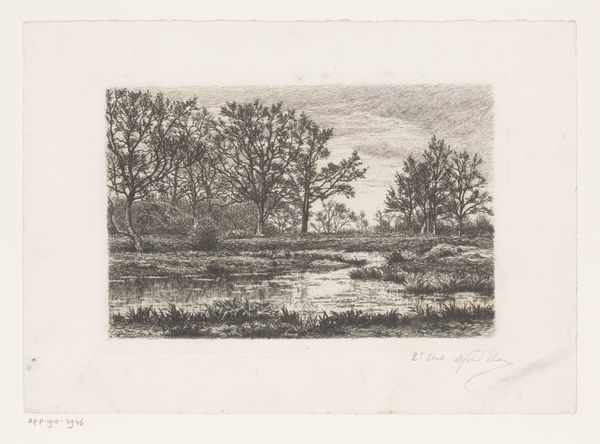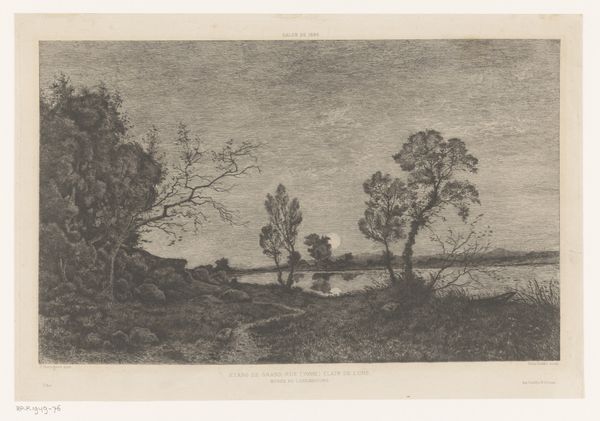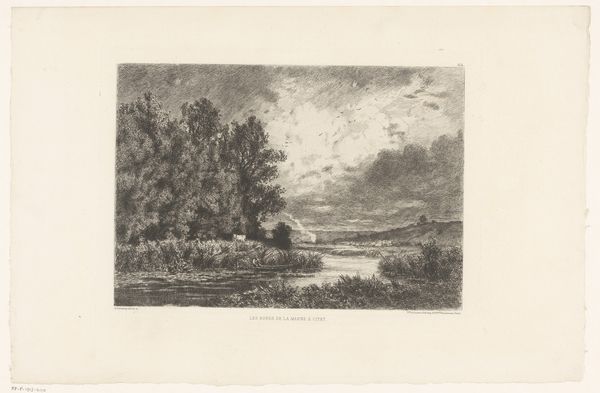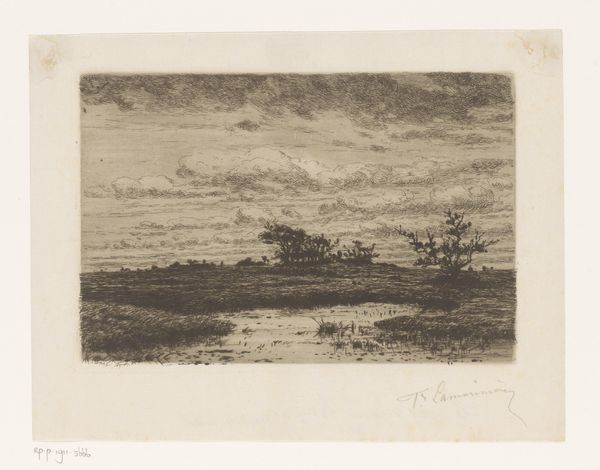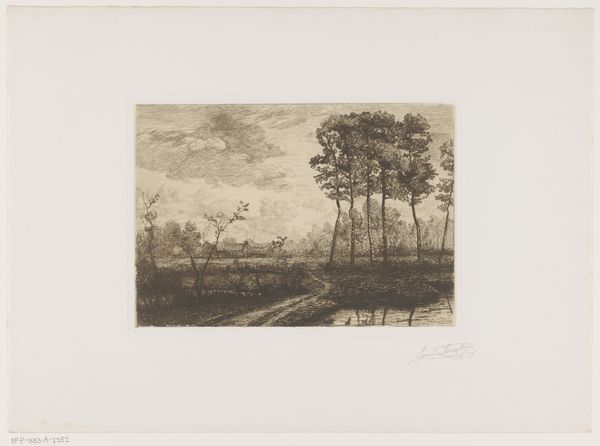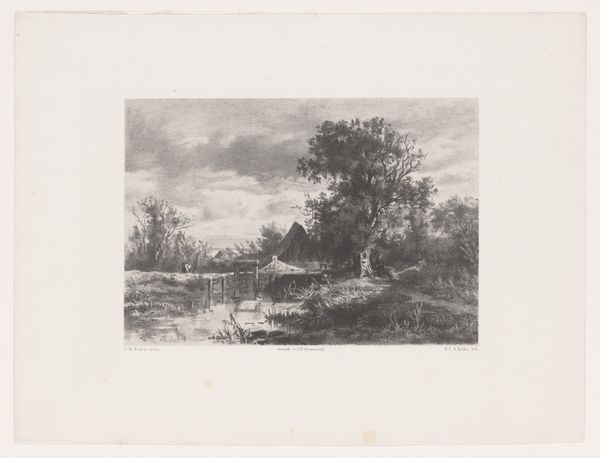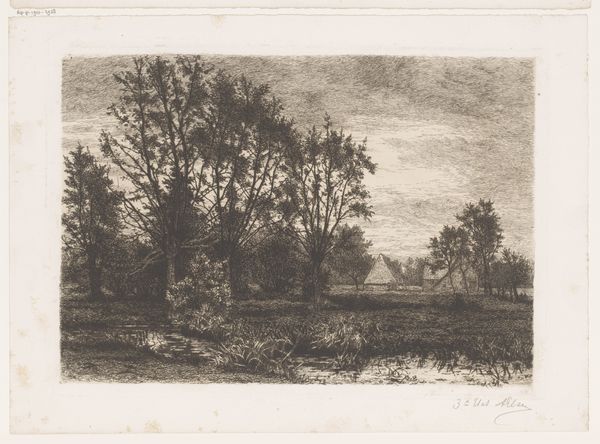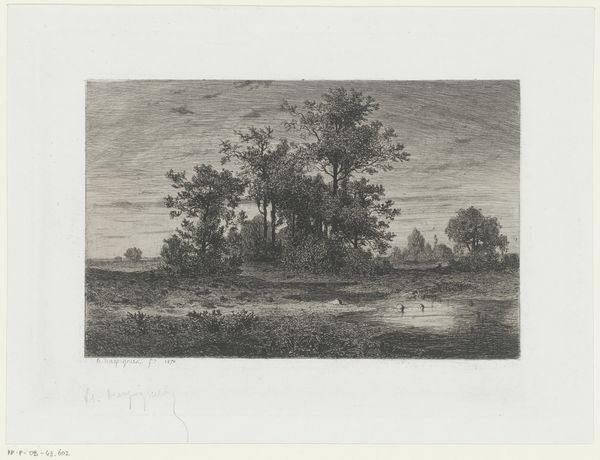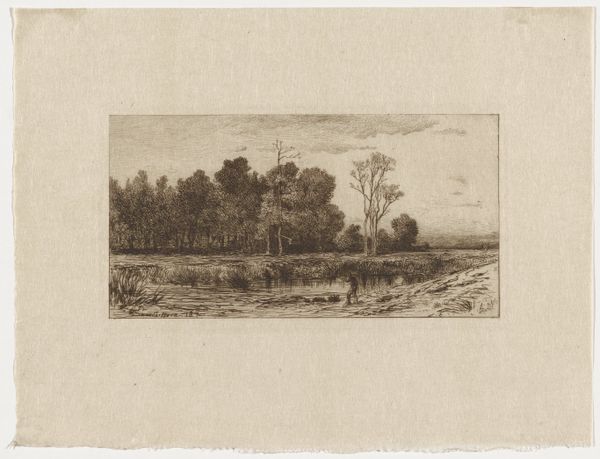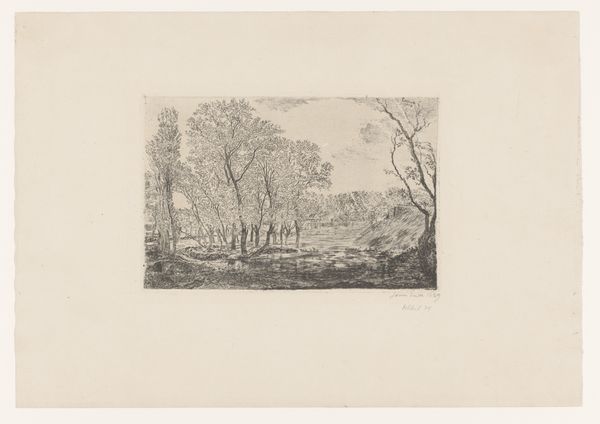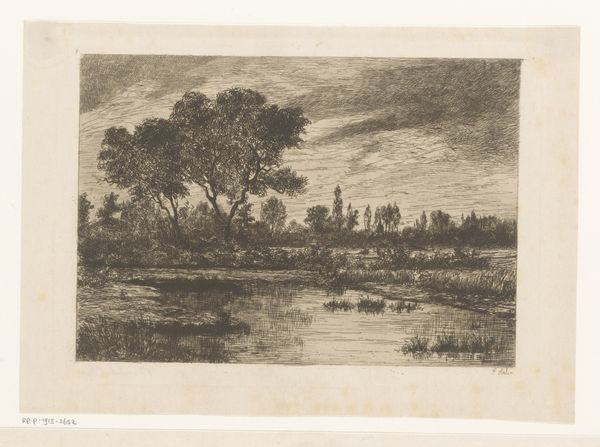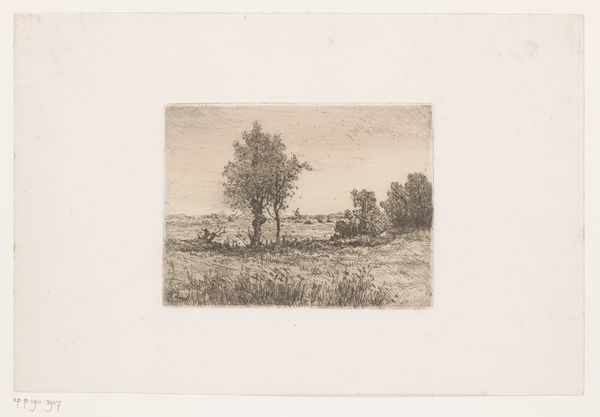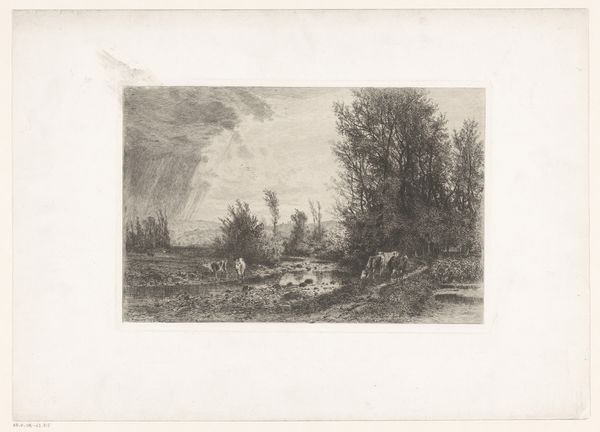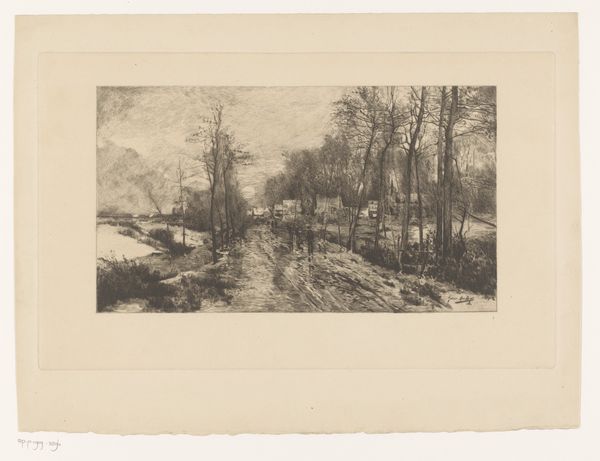
drawing, print, etching, pencil
#
pencil drawn
#
drawing
#
natural tone
# print
#
etching
#
pencil sketch
#
landscape
#
pencil
#
pencil work
#
realism
Dimensions: height 200 mm, width 2800 mm
Copyright: Rijks Museum: Open Domain
Editor: This is "Moeraslandschap bij schemering," or "Marsh Landscape at Twilight," made between 1860 and 1910, attributed to Alfred Elsen. It’s a drawing using pencil and etching. There's something quite melancholic about it; the water reflects the sky, blending into a unified field, and the trees have an almost skeletal quality. What stands out to you in this piece? Curator: The landscape, reduced to these shades, evokes a potent sense of time and memory, wouldn't you agree? Notice how the reflections disrupt the solidity of the land. In many cultures, water is seen as a threshold, a space of transition. Do you think the artist is intentionally mirroring not just the sky, but perhaps a deeper emotional state? Editor: That’s interesting. A state of transition… it does feel liminal. Perhaps twilight itself represents that—the end of the day, the beginning of night, a moment in between. Curator: Precisely. Consider the psychological weight of twilight—the softening of edges, the fading of light. It often stirs feelings of nostalgia, of something passing. And look at how the skeletal trees, as you described them, pierce the sky. Trees often symbolize life and connection, but these are bare, reaching into an uncertain future. It seems the artist speaks about a society or individual disconnected from its roots, grasping for meaning, no? Editor: I can see that. I hadn't thought about the trees in that way, more as a purely visual element. It does lend a new depth to the scene. Curator: And notice how the composition leads our eye not to a focal point but into the distance. A journey. Symbolically, it hints at something incomplete, a search still underway. That reflective pool in the foreground then becomes almost a self-portrait in reflection. Editor: So, this seemingly simple landscape drawing is loaded with symbolism related to memory, transition, and even identity? Curator: Indeed. The artist isn't just showing us a landscape; he's inviting us to contemplate our own place within it, past, present, and future.
Comments
No comments
Be the first to comment and join the conversation on the ultimate creative platform.
